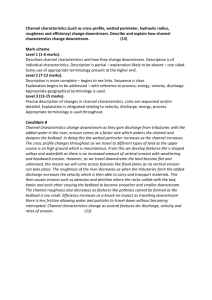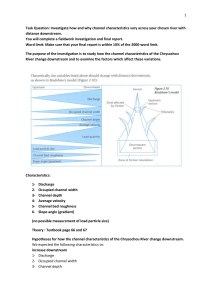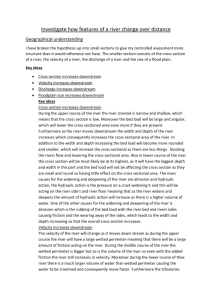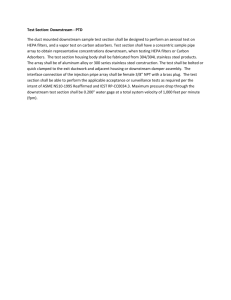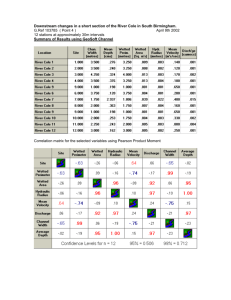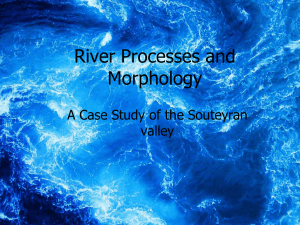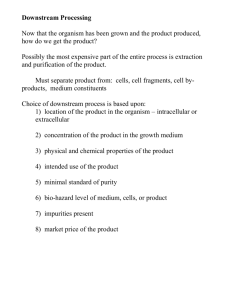An investigation of the relationship between distance downstream
advertisement
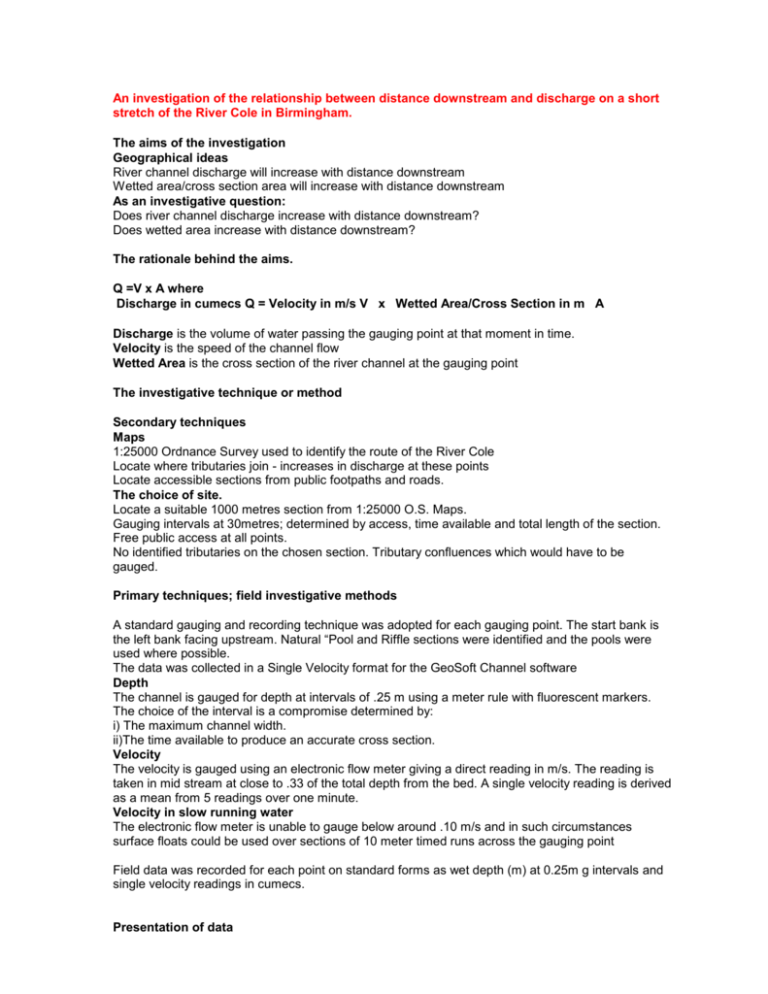
An investigation of the relationship between distance downstream and discharge on a short stretch of the River Cole in Birmingham. The aims of the investigation Geographical ideas River channel discharge will increase with distance downstream Wetted area/cross section area will increase with distance downstream As an investigative question: Does river channel discharge increase with distance downstream? Does wetted area increase with distance downstream? The rationale behind the aims. Q =V x A where Discharge in cumecs Q = Velocity in m/s V x Wetted Area/Cross Section in m A Discharge is the volume of water passing the gauging point at that moment in time. Velocity is the speed of the channel flow Wetted Area is the cross section of the river channel at the gauging point The investigative technique or method Secondary techniques Maps 1:25000 Ordnance Survey used to identify the route of the River Cole Locate where tributaries join - increases in discharge at these points Locate accessible sections from public footpaths and roads. The choice of site. Locate a suitable 1000 metres section from 1:25000 O.S. Maps. Gauging intervals at 30metres; determined by access, time available and total length of the section. Free public access at all points. No identified tributaries on the chosen section. Tributary confluences which would have to be gauged. Primary techniques; field investigative methods A standard gauging and recording technique was adopted for each gauging point. The start bank is the left bank facing upstream. Natural “Pool and Riffle sections were identified and the pools were used where possible. The data was collected in a Single Velocity format for the GeoSoft Channel software Depth The channel is gauged for depth at intervals of .25 m using a meter rule with fluorescent markers. The choice of the interval is a compromise determined by: i) The maximum channel width. ii)The time available to produce an accurate cross section. Velocity The velocity is gauged using an electronic flow meter giving a direct reading in m/s. The reading is taken in mid stream at close to .33 of the total depth from the bed. A single velocity reading is derived as a mean from 5 readings over one minute. Velocity in slow running water The electronic flow meter is unable to gauge below around .10 m/s and in such circumstances surface floats could be used over sections of 10 meter timed runs across the gauging point Field data was recorded for each point on standard forms as wet depth (m) at 0.25m g intervals and single velocity readings in cumecs. Presentation of data Data processed and transformed using GeoSoft Channel software Tables Data presented as tables showing the recorded variables of: Distance downstream (km) and the calculated variables: Wetted Area Key variable to be investigated Wetted Perimeter Hydraulic Radius Mean Velocity Discharge Channel Width Average Depth Cross sections are obtained for each gauging point. Wet Depth values are plotted at 0.25 m intervals from the start bank to produce a GeoSoft derived section with Wetted Area and Discharge calculations. Graphs Graph of Distance Downstream against Discharge Graph of Distance Downstream against Wetted Area (the GeoSoft term for cross sectional area.) From the graph you can see i)any visual correlation between distance downstream and either discharge or cross section area (wetted area) ii)any anomalous values with results for discharge or channel cross section outside the expected range compared to upstream and downstream. Statistical method; GeoSoft Cannel computer software uses Pearson Product Moment A quantative value is given to the strength of the relationship between two chosen variables of Distance downstream and Discharge through the use of Pearson Product Moment. This statistical method gives a result comparable to Spearman Rank. The same is done for the relationship between Distance downstream against Wetted Area. On separate A4 or word processed: Analysis By directly referring to the sources of information provided: Location map of gauging points and overall section length Data table for calculated variables Correlation matrix for calculated variables using Pearson Product Moment ( = to Spearman Rank) Line graphs for calculated variables Scattergraphs for calculated variables 1) Describe the correlation between distance downstream and channel discharge. 2) Describe the correlation between distance downstream and wetted area (cross section area) Evaluation 3) Explain to what extent you were able to establish a correlation between distance downstream and the calculated variables. 4) Go on to comment on the following: The standardized gauging technique was valid BUT the cross sections were subject to some simplification. The chosen river section was possibly too short to display the expected downstream correlations. The River Cole has been extensively managed to reduce the threat of flooding in a suburban area. The channel cross sections are largely man made and not the product of natural grading. Natural channel changes might not show up over such a short section. Proposed further work might include: Extending the study over a longer section of the River Cole. Selecting a less managed river. Measuring gradient as an indicator of channel energy Q1.Using the drainage basin model and your knowledge of channel processes discuss why the volume of water at the gauging points might be found to increase with distance downstream. Q2 Using the drainage basin model and your knowledge of channel processes discuss why the wetted area of the channel might be found to increase with distance downstream. Q3 discuss the possible limitations of your chosen field techniques and outline what precautions were taken to ensure the accuracy of the data? Q4 describe one method of data presentation and say why this method was appropriate for your particular purpose. Q5 describe one technique of statistical analysis and explain (i) Why this selected method is particularly appropriate for the task (ii) The statistical significance of the result to the findings of your investigation. Q6 Discuss the extent to which the results of your enquiry supported your hypothesis or research questions.
